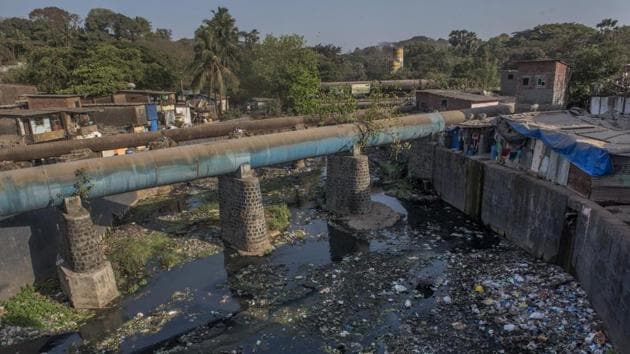The Brihanmumbai Municipal Corporation (BMC) has proposed in-situ treatment of the sewage from 25 storm water drains between Bandra and Dahisar to stop it from spilling into the sea. According to city officials, this would be done with the aid of N-Treat Technology from the Indian Institute of Technology-Bombay (IIT-B).

Rainwater is channelled into the sea through storm drains, or nullahs as they are known locally in Mumbai. However, shanties for people and businesses have sprung up on their banks and pour raw sewage into the nullah rivers. The civic authority will deploy the N-Treat technology, developed by SINE IIT Bombay Company or the Society for Innovation and Entrepreneurship, an umbrella organizationatIIT-B, as a temporary solution to the pollution that is now present in the nullahs.
N-Treat is a seven-stage waste treatment procedure that makes use of screens, gates, silt traps, filtration curtains made of coconut fibres, and sodium hypochlorite for disinfection. The thorough project report for N-Treat, a copy of which can be seen on the civic organization’s website, states that it is a natural and environmentally beneficial method of treating sewage. It may be set up without additional room since it uses the in-situ or on-site technique of treatment, which takes place within the nullah channels.
In the first step, floating items like plastic cups, paper plates, polythene bags, sanitary towels, or wood are screened to keep them out. Three coarse screens will be installed, with the first having a 60 mm spacing to remove big floating materials, the second having a 40 mm spacing, and the third having a 20 mm spacing. In the second step, it was suggested to build a silt trap, which would give sedimentation on the nullah bed an inclined surface and a “parking space.”
Installation of “bio zones”—curtains made of coconut fiber—during the next three stages will serve as filters and encourage the development of biofilm, which will aid in the breakdown of organic materials. It has been suggested to create a floating wetland with aquatic plants growing on floating mats.
In addition to a floating bed on the surface, IIT-B has suggested suspending florafts, or floating rafts, upwards. Their dangling roots would offer a sizable surface area for passive filtering as well as microbial consortia growth, the plan reads. Because plants in floating wetlands get their nutrients directly from the water column for growth and development, fewer organic and inorganic contaminants are produced. Sodium hypochlorite disinfection, which kills microorganisms in the water, is the last step in the treatment of sewage.
‘BMC requested IIT-B to submit a Detailed Project Report for the project,’ a senior municipal official said. The N-Treat technique that was recommended to the municipal body is economical since it doesn’t need manual pumping, uses less electricity, and doesn’t require a lot of labor-intensive maintenance.
Daily removal of floating debris, removal of silt deposits from the silt traps every four months, and necessary trimming of plants are all included. Daily disposal of the daily gathered floating garbage will take place at the closest municipal waste collection facility.
This 2.9 km long project will cope with the 1,11,150 kilo litres of water that the 25 nullahs together flow each day. “The project will take place over the following 5.5 years, with the first six months needed for equipment installation. For the unimpeded flow of water in the nullahs, we will need to remove the equipment every year during the monsoon season, the civic official stated.
